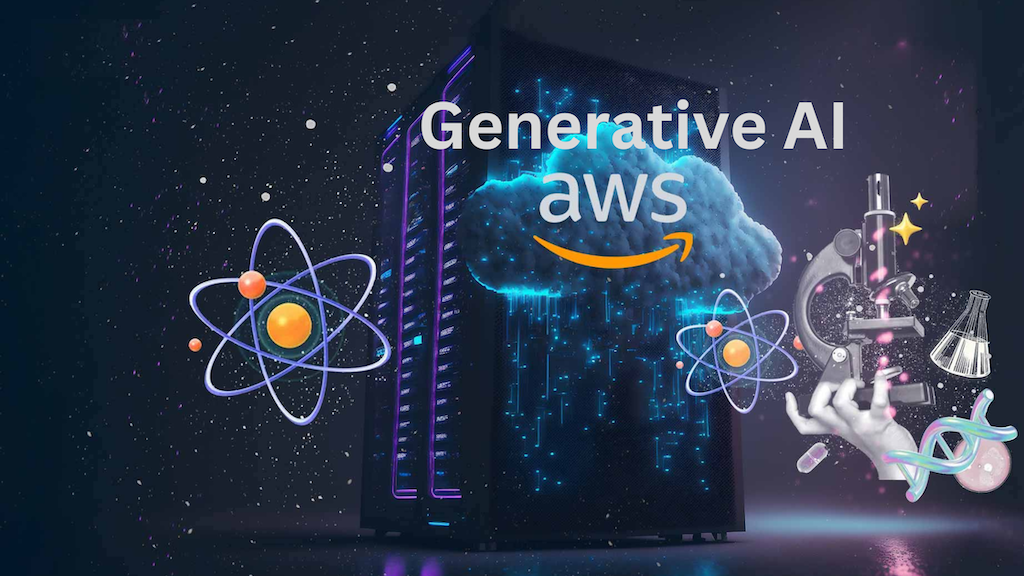From Zero to Hero: Building an AWSome Generative AI App in Under 50 Hours!

In the fast-paced world of technology, hackathons have become a breeding ground for innovation. They challenge participants to think outside the box, pushing the boundaries of what’s possible. Recently, I took part in the HealthUniverse Hackathon, where I had the opportunity to harness the power of AWS to build a cutting-edge application in less than 50 hours. This blog post will delve into the creation of the Mediverse Bot, a Generative AI Medical Application, emphasizing the agility and efficiency of AWS in rapid application development.
Why Mediverse Bot?
The medical field is in a constant state of evolution. With the rise of holistic and integrative approaches to health, there’s an increasing demand to cross-reference conventional medical knowledge with natural and herbal therapies. Mediverse Bot was conceived to address this gap. Here’s why:
- Comprehensive Medical Knowledge: The bot consolidates knowledge from various trusted sources, offering a one-stop solution for both professionals and patients.
- Bridging Conventional and Alternative Medicine: Mediverse Bot integrates knowledge of natural therapies with conventional treatments, providing a holistic health approach.
- Enhancing Patient Autonomy: By empowering patients with knowledge, the bot fosters a collaborative doctor-patient relationship and promotes informed health decisions.
- Streamlining Medical Consultations: Healthcare professionals can leverage the bot to quickly reference treatments, enhancing consultation efficiency.
Key Features of Mediverse Bot
- Symptom Checker: Users can input symptoms and receive potential diagnoses, along with both conventional and natural treatment options.
- Drug-Herb Interactions: The bot checks for potential interactions between herbal remedies and conventional medications.
- Treatment Deep Dive: Users can explore detailed information about specific treatments, from surgical procedures to herbal therapies.
- Holistic Health Plans: The bot can generate a comprehensive health plan based on a user’s medical history and preferences.
AWS’s Innovation in Generative AI Offerings
Large Language Models (LLMs) and Generative AI technologies are transforming the way enterprises solve traditionally complex challenges related to natural language processing and understanding. Amazon Web Services (AWS) offers a range of services and tools that can be leveraged to enhance enterprise capabilities using these technologies.
Large Language Models (LLMs) have ushered in a new era of conversational AI, enabling chatbots to engage in human-like dialogues across diverse subjects. However, while LLMs are linguistically adept, they sometimes struggle with highly specialized topics or up-to-date information. To address this, developers are integrating LLMs with specific data sources, allowing them to tap into internal knowledge bases. This fusion of general linguistic prowess with specialized knowledge ensures that chatbots can provide accurate answers without resorting to guesswork.
One of the innovative techniques employed in this integration is the use of Retrieval-Augmented Generation (RAG). RAG combines the strengths of retrieval-based and generative approaches, allowing the model to pull relevant information from a database and then generate a coherent response. The data, often in the form of text files, is transformed into embedding vectors, which are essentially numerical representations capturing the essence of the information. These vectors are crucial as they allow for efficient storage and quick retrieval of data, ensuring that the chatbot’s responses are both prompt and pertinent.
One of the key AWS services in this context is Amazon Kendra, a fully managed service that provides out-of-the-box semantic search capabilities for state-of-the-art ranking of documents and passages. Amazon Kendra offers easy-to-use deep learning search models that are pre-trained on 14 domains and do not require any machine learning expertise. This makes it an ideal tool for implementing Retrieval Augmented Generation (RAG) workflows, where the most relevant content is retrieved from the enterprise knowledge base and used as context for generating responses using LLMs.
Another key AWS service is Amazon SageMaker JumpStart, which provides pre-trained language models that can be used to analyze complex documents and provide summaries and answers to questions. SageMaker JumpStart provides many pre-trained language models called foundation models, which can be used for semantic searching of large-scale data.
In addition to these services, AWS also offers Amazon Bedrock and Amazon Titan, which are designed to make it easier to build and scale generative AI applications. These services will soon offer LLMs that can be used to create more capable and compelling conversational AI experiences for customer service applications, and improve employee productivity through more intuitive and accurate responses.
AWS’s Comprehensive Vector Database Offerings
Vector databases encode various types of data into vectors using embedding models, capturing the essence and context of the data. This encoding allows for the discovery of similar assets by searching for neighboring data points, enabling unique experiences like searching for images similar to a photograph taken on a smartphone.
Vector databases operationalize embedding models, making application development more efficient with features like resource management, security controls, and sophisticated query languages. They empower developers to create unique experiences, such as searching for similar images using a smartphone photograph. Additionally, they can complement generative AI models by providing an external knowledge base, ensuring the delivery of trustworthy information.
Vector databases accelerate AI application development and simplify AI-powered application workloads’ operationalization. They offer an alternative to building on top of bare k-NN indexes, which require extensive expertise. A robust vector database provides foundational features like data management, fault tolerance, and a query engine, simplifying scaling and supporting security requirements.
AWS offers a range of services tailored for vector database needs:
- Amazon OpenSearch Service: Facilitates interactive log analytics, real-time application monitoring, website search, and more. It supports k-Nearest Neighbor (k-NN) search.
- Amazon Aurora PostgreSQL-Compatible Edition & Amazon RDS for PostgreSQL: These support the pgvector extension, allowing you to store embeddings from ML models in your database and perform efficient similarity searches.
- Amazon Neptune ML: A capability of Neptune that uses Graph Neural Networks (GNNs) for making predictions using graph data.
By leveraging AWS’s offerings, developers can harness the power of vector databases efficiently, creating innovative and user-centric applications.
High-level Design of Mediverse Bot

Architecture of Mediverse Bot on AWS

Demo of Mediverse Bot
Note: playback speed 1.5x recommended
Conclusion
As we’ve seen with the rapid development of applications in under 50 hours, AWS’s commitment to innovation provides a robust foundation for the future of AI. For anyone looking to delve into Generative AI or Large Language Models, AWS offers a treasure trove of resources, tools, and services, making it the go-to platform for AI-driven solutions. These tools are meticulously designed to handle the complexities of AI, allowing developers to focus on crafting unique, user-centric solutions.
In essence, AWS is not just a service provider; it’s a partner in innovation, pushing the boundaries of what’s possible in the world of Generative AI.
References
- Frontend Git Repo: https://github.com/rmadabusiml/mediverse
- Backend Git Repo: https://github.com/rmadabusiml/mediverse-api
Author: Raghavan Madabusi

